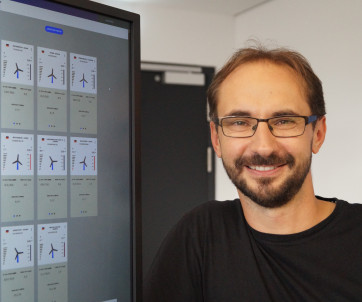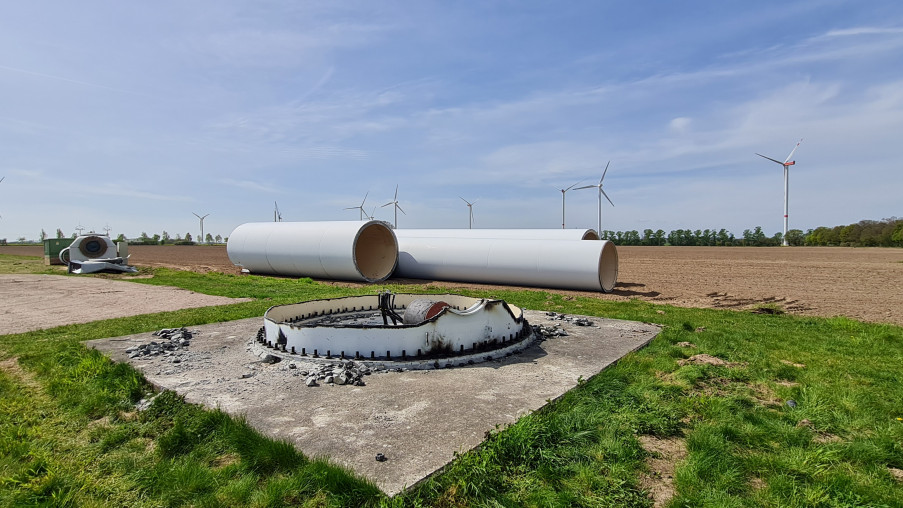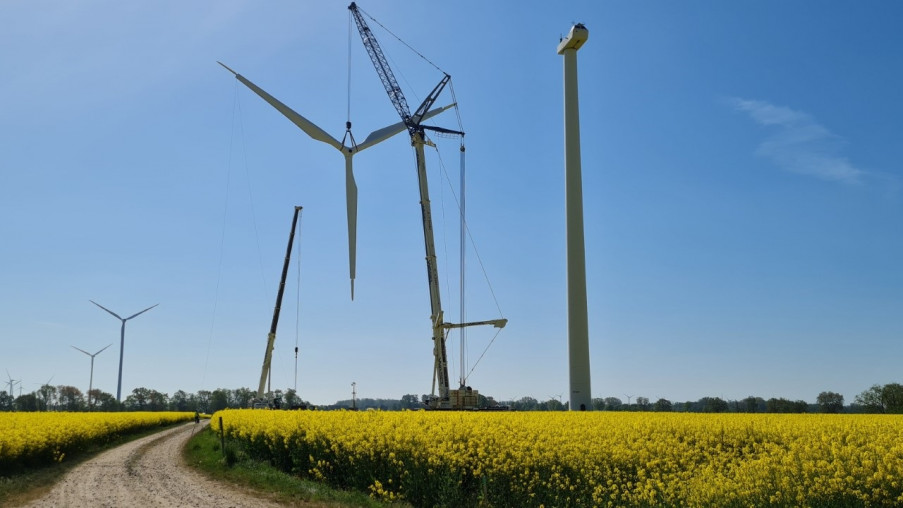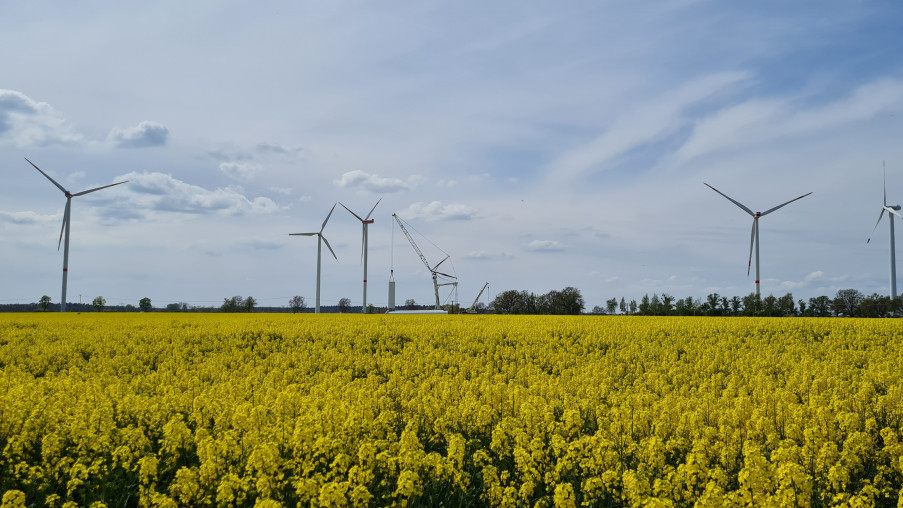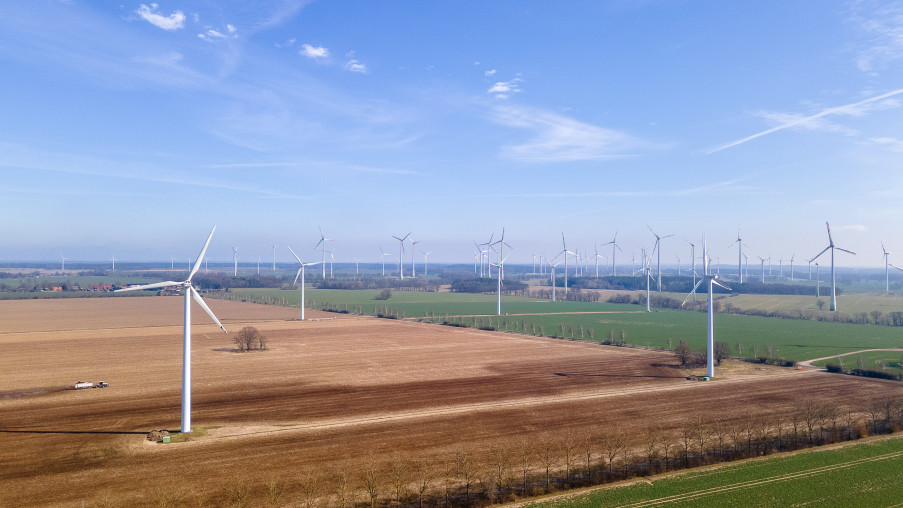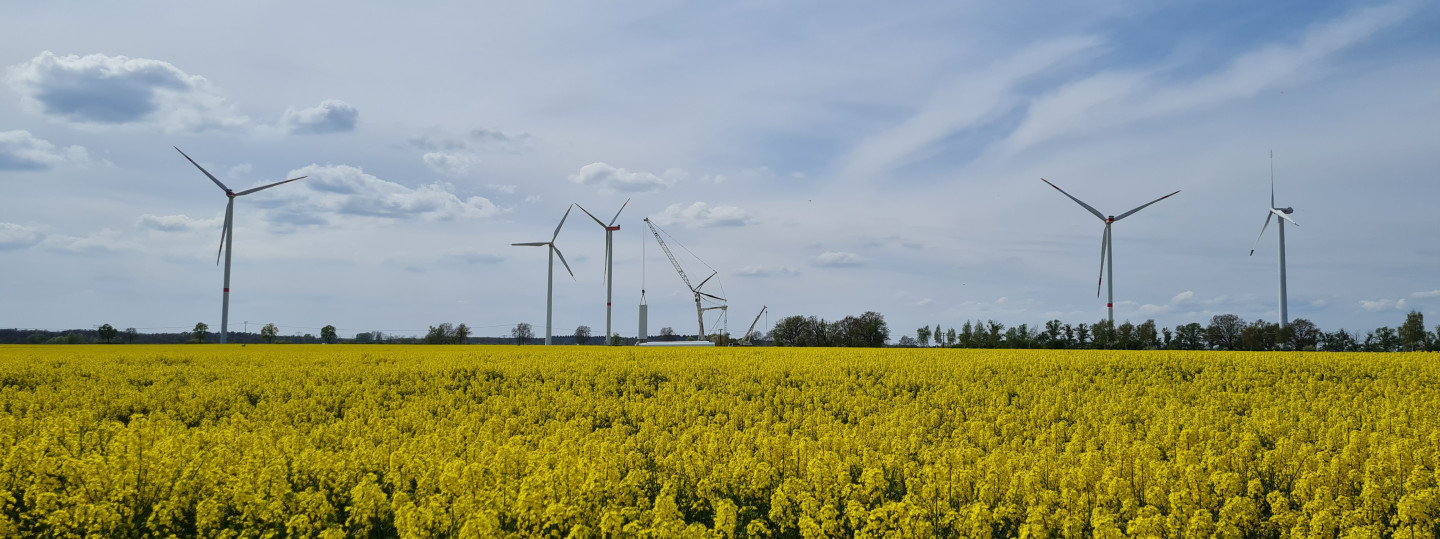
Onshore on the rise - an insight into repowering at ENGIE
ENGIE Deutschland Erneuerbare GmbH is advancing the energy transition in Germany with important projects. This also includes the repowering of wind turbines "from the very beginning". In this article, you will find out what this is all about - including insights into a current project.
What does repowering mean?
As a rule, technical plants are not made to last forever. At some point, components break down and it is no longer worth repairing them. It is then necessary to replace the relevant parts or the entire system. Likewise, the expiry of state subsidy models can call the economic viability of plants into question and, in the worst case, lead to a standstill of the wind turbines.
Repowering is the term used in the energy sector when old power plants or parts of them are replaced with new, modern solutions that are usually more efficient. This makes it possible to get much more power out of old plant complexes in the same space.
Technical upgrading: repowering and the energy transition
The concept of repowering plays an important role in the energy industry and in securing renewable electricity production - especially in the field of wind power. Due to the rapid technical development in the energy sector, older wind turbines often cannot keep up with modern turbines. While very old wind turbines, for example from the 1990s, only have a rated output in the lower three-digit kilowatt range, today's turbines make it into the six megawatt range. If we consider further how difficult our society finds it to release land for wind turbines, the repowering of outdated wind turbines makes a lot of sense. Every additional kilowatt hour that we can produce with onshore wind power is important for achieving the climate targets and the energy transition.
Why there are also economic reasons for repowering
Another important argument for repowering is the expiry of the EEG feed-in tariff. While the operators of wind farms received a price for their electricity during the term of the EEG that was guaranteed to them for many years, it is now subject to the fluctuations of the electricity market for wind turbines with expired remuneration entitlements. Thousands of sites will be affected by this in the coming years and in many cases, despite the current crisis-induced high electricity prices, operators are asking themselves to what extent they can still be operated economically at all.
Repowering ensures the economic survival of old wind turbines. However, replacing old technology that is no longer eligible for subsidies is also a complex new project. The old turbine must be dismantled and disposed of, and new wind turbines must be purchased. Due to the dimensions of today's wind farms and depending on the location, this can be an enormous logistical challenge under certain circumstances. The biggest challenge, however, is creating the legal planning requirements and obtaining the necessary permits for construction and operation. This process also spans several years for repowering projects.
The repowering support from ENGIE
We at ENGIE Deutschland Erneuerbare consider repowering to be an important piece of the energy transition puzzle. We offer operators of "post-EEG" plants different models, depending on their willingness to take risks. This ranges from marketing the electricity via Power Purchase Agreements (PPAs) to buying the plants. As far as possible, we carry out repowering measures to preserve the site for green energy production.
„With repowering, we implement our ambitious goals for the expansion of renewable energies not only through new projects, but equally through the further development of existing plants.“
Ralf Schürkamp, Managing Director ENGIE Germany Renewables
Successes have already been recorded: Last year, we were awarded several contracts in the September tender of the Federal Network Agency (BNetzA) for onshore wind turbines. This involves the repowering of a total of 50 megawatts of wind power capacity - including: our site in Karstädt, Brandenburg. We have been operating several wind farms in the Prignitz district since 2001, and we are now bringing the first of them up to date. The twenty old turbines with a total output of 26 megawatts are being replaced with seven new ones with a total output of 43.4 megawatts. The wind farm with thirteen fewer turbines will not only make the view of the horizon airier in future, but will also supply four times as much electricity per year.
New wind power for Karstädt: an insight into the repowering project
The dismantling of the old wind turbines by a specialist service provider is now almost complete. What may sound simple is a real challenge in practice. Wind turbines are complex technical systems and engineers in this field deal with components of immense dimensions. The blades of the old turbines alone, which have to be dismantled at a height of 70 meters together with the rotor, weigh around 4.5 tons each. The nacelle also weighs 50 tons. By way of comparison, an average SUV weighs a little more than two tons. If you don't show up with heavy equipment in the form of a heavy-duty crane, you don't stand a chance. In addition, the weather has to play along. If the wind is too strong, as our French colleagues at ENGIE would say, "rien ne va plus". So far, however, the weather in Karstädt has always played along.
Repowering - boost for the energy transition
Each day, the task force manages to dismantle one turbine in good conditions. First, the rotor and blades are removed, followed by the nacelle and, piece by piece, the three tower segments. Finally, the foundation of the old turbine is broken up with a loosening blast and then removed.
Sustainability is a high priority for us in repowering. The old turbines therefore do not end up on the scrap heap. They are recycled in the best possible way:
- The blades and the nacelle are loaded individually onto a transport trailer and taken to a cutting site nearby. There, the modules, which are mainly made of glass-reinforced plastic, are shredded by an excavator equipped with a special saw. The resulting material is reused as an alternative building material for the production of panels.
- The steel parts of the tower segments go to a waste disposal company
- The concrete from the blasted foundations will be used to build the driveways to the new power plants.
The dismantling should be completed by the end of August. Then it will be time to erect the new turbines and fly high: the modern wind turbines have a total height of 247 meters and each rotor has a diameter of 162 meters.
Our Expert
